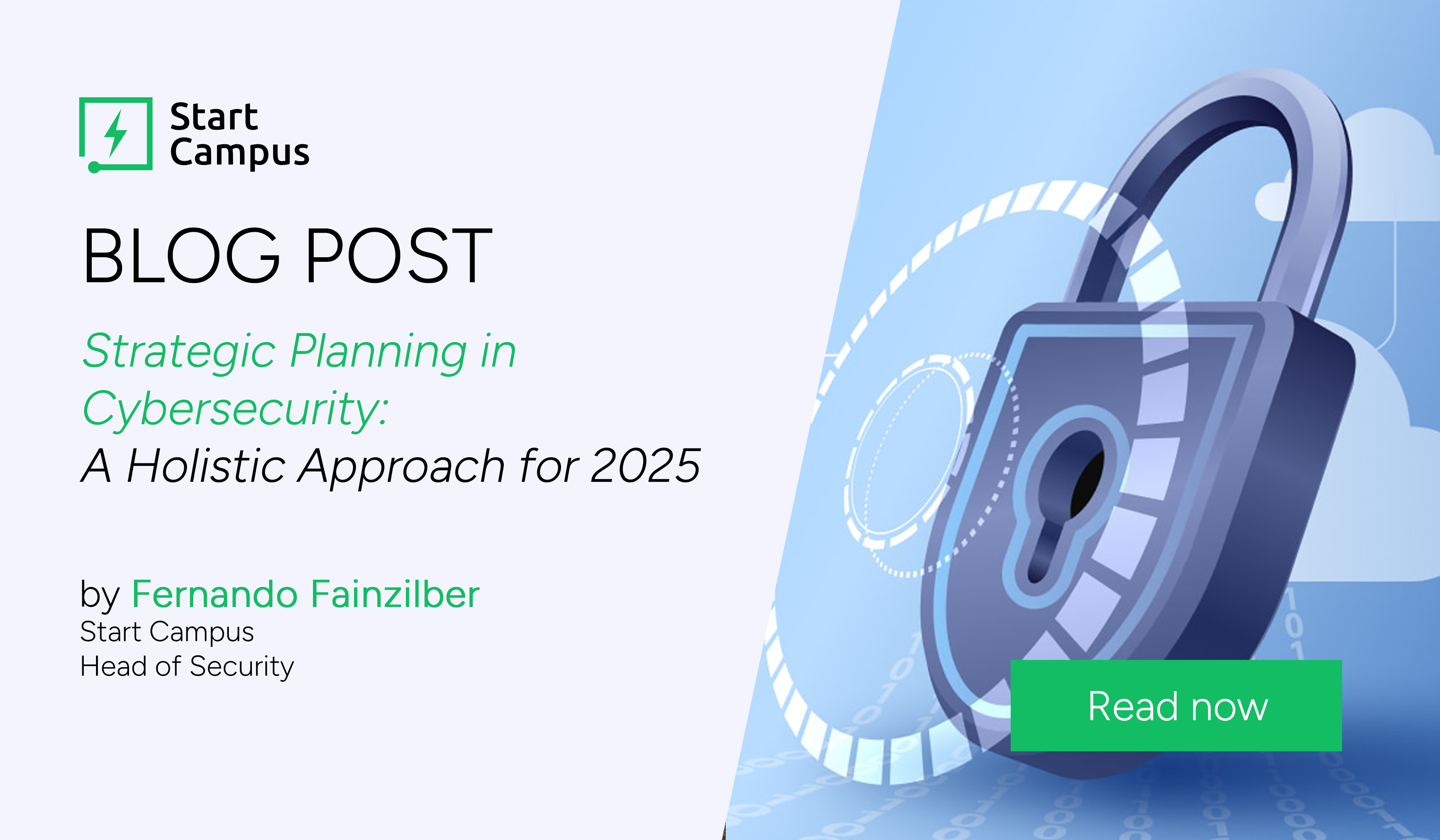Strategic Planning in Cybersecurity: A Holistic Approach for 2025
In today's rapidly evolving digital landscape, cybersecurity has become a paramount concern for businesses of all sizes. Cybercriminals constantly...
6 min read
 Fernando Fainzilber
:
12/2024
Fernando Fainzilber
:
12/2024
Critical infrastructure (CI) is the foundation of essential services like power, water, healthcare, and transportation, all of which rely increasingly on digital systems housed within data centers. As data centers store and process vast amounts of information critical to multiple sectors, they face rising threats from both natural and human-made sources. This article provides a comprehensive examination of CI, emphasizing data center security and addressing physical and information security threats. We’ll also discuss the NIS2 Directive and its role in enhancing the resilience of critical infrastructure in the European Union.
1. What is Critical Infrastructure?
.jpg?width=305&height=458&name=enrique-alarcon-s8bX9IgG9rA-unsplash%20(1).jpg) 1.1. Defining Critical Infrastructure
1.1. Defining Critical Infrastructure
Critical infrastructure refers to the physical and cyber systems that are essential to the security, economy, health, and safety of a nation. According to CISA (Cybersecurity and Infrastructure Security Agency) in the U.S. and the European Union Agency for Cybersecurity (ENISA) in the EU, critical infrastructure includes sectors like energy, water, transportation, finance, healthcare, and IT services. Disruption in one of these sectors can create cascading effects, impacting both national and international stability.
1.2. Why Data Centers are Critical Infrastructure?
Data centers serve as the core of modern digital infrastructure, enabling cloud computing, financial transactions, e-commerce, healthcare information systems, and communication networks. As the demand for remote access, digital services, and data processing continues to grow, data centers’ roles become increasingly critical. Any downtime in a data center can lead to disruptions in essential services, creating ripple effects across other CI sectors. The sensitive information stored in data centers, including financial data, personal information, and government records, also makes them high-value targets for both cyber and physical threats.
1.3. Examples of Critical Infrastructure Sectors

2. Threats to Critical Infrastructure: Natural, Environmental, and Human-Made
Protecting data centers and other CI elements requires a deep understanding of the diverse threats they face. These can be divided into a) natural/environmental threats and b) human-made/intentional threats.
2.1. Natural and Environmental Threats
Data centers are increasingly vulnerable to natural and environmental threats, especially as climate change intensifies and natural resources consumption grows (unfortunately).
2.2. Human-Made and Intentional Threats
Human-made threats include both accidental and malicious actions. As data centers are high-value targets, they face a wide range of intentional security threats.
3. Regulatory Framework: The NIS2 Directive and Its Impact on Critical Infrastructure Protection
3.1. Overview of the NIS2 Directive
The Network and Information Security (NIS2) Directive is a comprehensive framework issued by the EU to strengthen cybersecurity and safeguard critical infrastructure. Expanding on the original NIS Directive, NIS2 emphasizes cybersecurity resilience, risk management, and reporting protocols. The directive is legally binding for organizations in sectors deemed critical, including IT and data centers. Compliance with NIS2 helps ensure that CI is resilient against evolving threats.
3.2. Key Requirements of NIS2 for Data Centers

4. Practical Steps for NIS2 Compliance in Data Centers
To comply with NIS2, data center operators need a proactive and layered security approach:
5. Conclusion: Strengthening Data Center Security in an Era of Increasing Threats
Data centers, as the nerve centers of critical infrastructure, play an indispensable role in society. Protecting them from natural disasters, cyber threats, and physical breaches requires a multifaceted approach that integrates physical and cyber defenses, regulatory compliance, and proactive risk management. The NIS2 Directive in the EU is a critical step toward ensuring that CI sectors meet rigorous security standards, fortifying defenses against both evolving cyber threats and environmental challenges.
As technology advances, the scope and sophistication of threats to data centers will likely increase, necessitating equally sophisticated security and protection methods, which are to be a strategic part of the business.

Head of Security, has a deep understanding of security in data center newbuilds and launches, having worked internationally for Amazon Web Services, most recently as Cluster Security Manager in Israel.
Get in touch with Fernando Fainzilber

In today's rapidly evolving digital landscape, cybersecurity has become a paramount concern for businesses of all sizes. Cybercriminals constantly...

As Europe rethinks its role in the global digital and energy landscape, one location is rapidly gaining strategic importance: Sines, Portugal. ...

This month marks a pivotal milestone for all of us here at Start Campus - one that underscores our vision, our commitment, and our role in shaping...